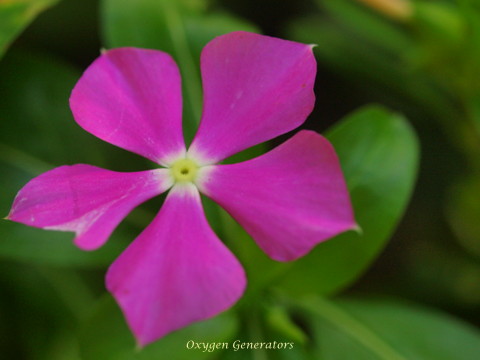Our gardens are still teeming with colors, of course, warm colors as in the reds, the oranges and the yellows. And we also have the colors in between. But please don't look for the blues and dark violets, as I have also been looking for them. I am compensating that lack of blues by getting the too small flowered blue weeds, which I have posted earlier. And the violets, we have them too, but not as dark as those you get in the temperate climates. At least I have here some lavender, that suffices for the meantime. Maybe you will tell me about the blue Plumbago, our blue Vanda, the butterfly pea, but sorry I don't have them in my garden.
Our colors are not confined with our flowers. Look at the above roots and base of this plant. Isn't it gorgeous enough to get your attention. The growing root hairs are all very red as well.
And look at those stem and leaves, so rich in color and texture that glows in morning sunlight.
This is the growing point with the emerging flower at the center. Even without the flowers, the leaves are already very ornamental enough.
The bloom already got out, the butterflies and other insects cannot wait for the flower to fully expand. Ants are under those ruffles if you look intently enough. I am sorry i forgot to mention the name of this plant, it is a cockscomb or Celosia argentea.
My Pentas lanceolata is too shaded, so the umbels don't get as big as it is supposed to. But the insects and butterflies compete alighting in it.
This might be a Vinca I got the seeds from some sidewalk. I forgot where i planted the seeds and realized it only when the flowers show up. The morphology of this flower is different from our common perennially growing Catharanthus roseus, however their leaves are almost the same. I wonder if I am correct in calling it Vinca.
The gaillardia are still producing flowers. However, I observed that not many butterflies are visiting it, unlike our marigolds, pentas, duranta and turnera. I don't know if the butterflies are not just used to it, because this is an introduced species from my US blogger friend.












Wonderful lessons and beautiful colors. It is amazing how different our enviroments are!
ReplyDeleteAll are beautiful!
ReplyDeleteWhat an interesting perspective. That Vinca is striking and the other images fascinating. Thanks for sharing.
ReplyDeleteI enjoyed each of your photos and especially the crinum (new to me)
ReplyDeleteYou're good at flower names, I'm learning from this post.
ReplyDeleteAnd of course your photos are all well-focused and lovely.
What a great idea! We used to admire only flowers!
ReplyDeleteI like the whole post! Root, stem, leaf... beautiful!
Have a great weekend!
Gorgeous flowers!
ReplyDeletei love your photos of the colorful roots, stems and leaves--they are equally beautiful!
ReplyDeletebeautiful macro of the cockscomb, the kamantigue is gorgeous!
Beautiful! I love the details in the three first photos.
ReplyDeleteWonderful photos!
ReplyDeletePink Hibiscus
I love seeing and reading about the flora in other countries....these colors are so vibrant and your shots are fabulous.....
ReplyDeleteLovely photos. Like the photo with the butterflies. And of course the three first photos are wonderful in olour and texture.
ReplyDeleteI grow Celosia and Pentas here as annuals. Somehow yours look more vibrant. Great pictures!
ReplyDeletewonderful pics! thanks for sharing your tropical world with us! :)
ReplyDeletei learned a lot. i really like the first three photos. what an interesting perspective. glad to see familiar flowers of my childhood. most of these flowers are what i see in my aunt's garden in mount banahaw and not surprising, because most of the residents there hails from Batangas. glad to have found your site at tina's WEF!
ReplyDeleteStunning and I love the cockscomb with its unusual stems and leaves...just beautiful all around.
ReplyDelete